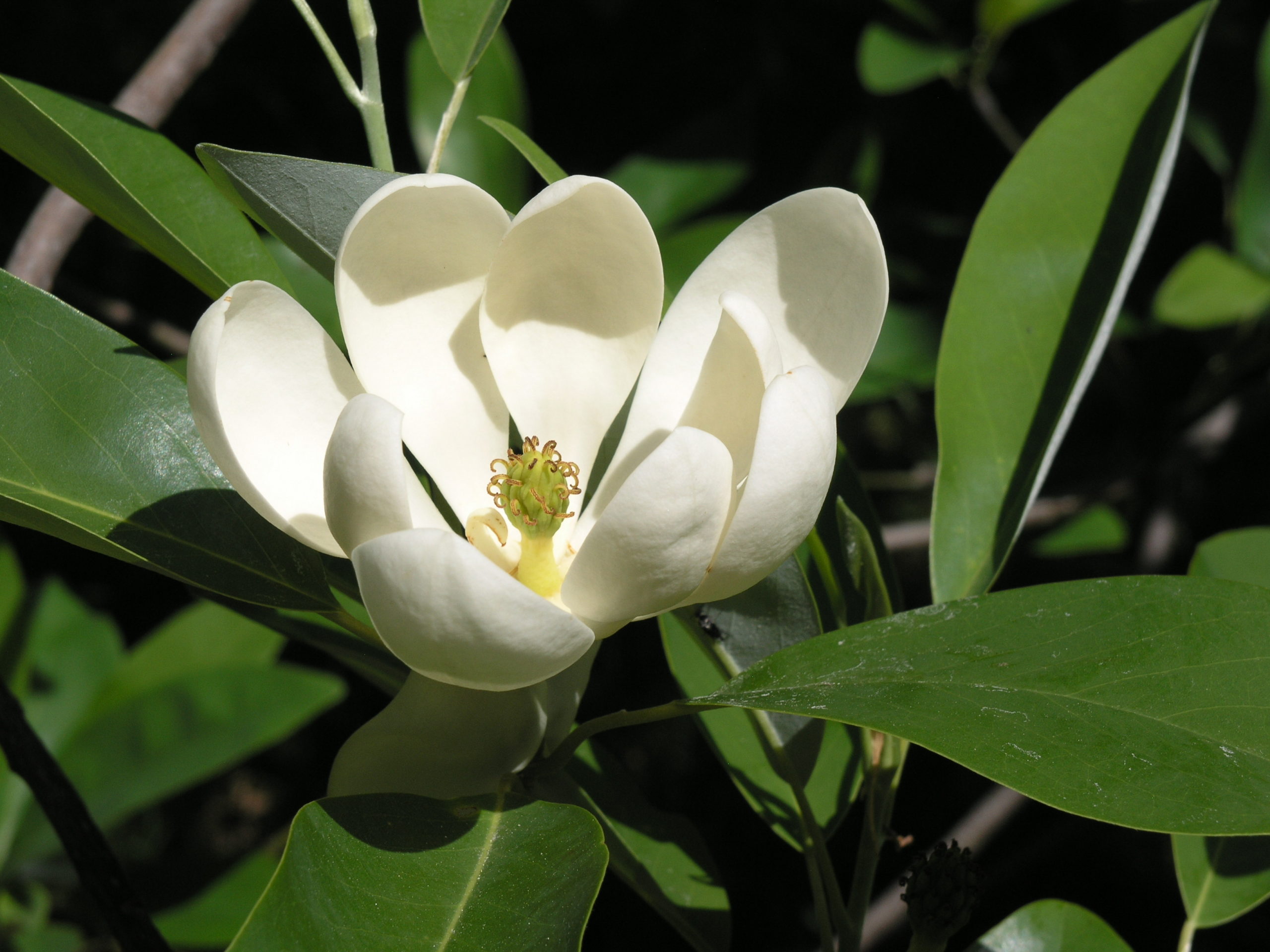
After a long winter, one of the first joyful signs of spring is the blooming of the Arboretum’s magnolia collection. New research published in a recent issue of Castanea by Senior Research Scientist Peter Del Tredici and colleagues puts the spotlight on this genus, specifically the genetic differences between populations of Magnolia virginiana across its broad range throughout eastern North America and Cuba.
With morphological and ecological distinctions in mind, Del Tredici and his co-authors examined the DNA sequences of multiple chloroplast genes, which were sampled from leaves collected from twenty-eight populations throughout the entire range of the species. Comparing the DNA sequences enabled the researchers to unravel the complex history and relationships of the different populations, and they found evidence for two distinct groups corresponding to geographic location. Of the 10 different haplotypes found, two haplotypes were found only in the northern populations, indicating divergence from the southern populations over a long time period. More work is required to examine these relationships, but the results suggest that M. virginiana could be reclassified as two distinct species: the northern, multi-stemmed, deciduous variety virginiana and the southern more tree-like, evergreen variety australis.
This paper is the result of an international research effort that was financially supported by the Magnolia Society International, the Arnold Arboretum of Harvard University, and the Ministry of Education, Culture, Sports, and Technology (MEXT) in Japan. Findings resulted from a collaboration of botanists and horticulturists from Japan, the United States, Belgium, Cuba, and the Russian Federation, as well as the efforts of the thirteen magnolia enthusiasts who performed leaf collections. In addition, specimens of the sampled populations were deposited in the herbaria of the Arnold Arboretum and Moscow State University.
Azuma H., R.B. Figlar, P. Del Tredici, K. Camelbeke, A. Palmarola-Bejerano, and M. S. Romanov. 2011. Intraspecific Sequence Variation of cpDNA Shows Two Distinct Groups Within Magnolia virginiana L. of Eastern North America and Cuba. Castanea 76(1): 118–123. [pdf]
From “free” to “friend”…
Established in 1911 as the Bulletin of Popular Information, Arnoldia has long been a definitive forum for conversations about temperate woody plants and their landscapes. In 2022, we rolled out a new vision for the magazine as a vigorous forum for tales of plant exploration, behind-the-scenes glimpses of botanical research, and deep dives into the history of gardens, landscapes, and science. The new Arnoldia includes poetry, visual art, and literary essays, following the human imagination wherever it entangles with trees.
It takes resources to gather and nurture these new voices, and we depend on the support of our member-subscribers to make it possible. But membership means more: by becoming a member of the Arnold Arboretum, you help to keep our collection vibrant and our research and educational mission active. Through the pages of Arnoldia, you can take part in the life of this free-to-all landscape whether you live next door or an ocean away.
